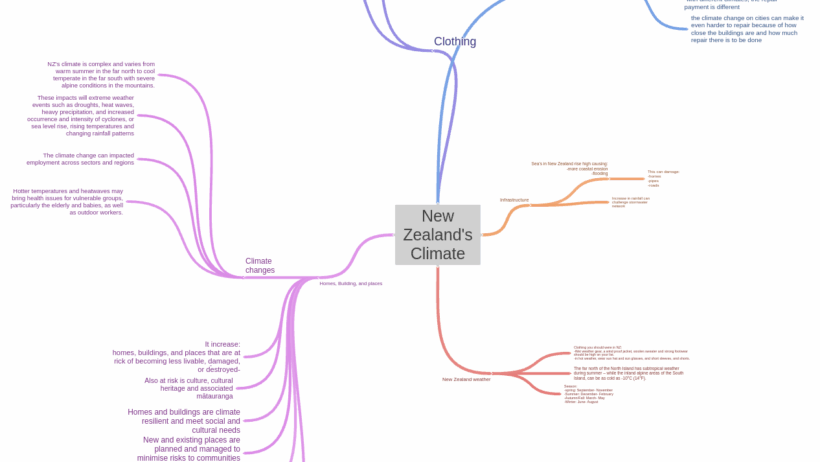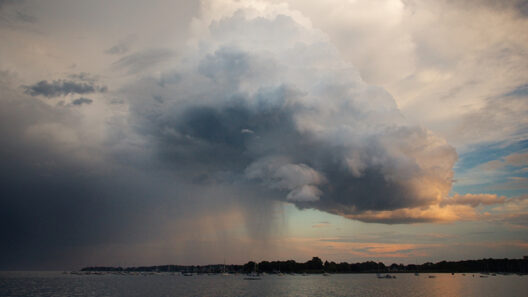New Zealand, an idyllic archipelago nestled in the southwestern Pacific Ocean, boasts a multifarious climate that varies widely from one region to another. This remarkable diversity not only influences the country’s ecosystems and biodiversity but also establishes a distinctive identity that reflects the unique geographical features. From the lush, verdant rainforests to the rugged, windswept coasts, New Zealand’s climate is a captivating tapestry that invites inquiry and exploration.
So, what is New Zealand’s climate really like? Can it be reduced to mere descriptions of temperate zones and seasonal variations? The answer lies in the complexities and multifaceted nature of its environmental conditions, which can be both enchanting and demanding.
New Zealand’s climate can primarily be classified as temperate maritime, characterized by mild temperatures, abundant rainfall, and moderate weather patterns. However, this is merely a simplification of a much richer climatic narrative. The country can essentially be divided into two main islands: the North Island and the South Island, each exhibiting distinct climatic regions.
On the North Island, one can encounter a subtropical climate in the northernmost regions, thus fostering an environment conducive to thriving agriculture and horticulture. The juxtaposition of warm temperatures and rich soils contributes significantly to New Zealand’s reputation as a global player in the production of kiwi fruits, grapes, and avocados. Moreover, this region experiences relatively high humidity and rainfall, facilitating the growth of expansive lush vegetation.
As one travels southward, the climate transitions into a temperate zone, characterized by cooler temperatures and distinct seasons. The central regions, such as Taupo and Ruapehu, are marked by their striking beauty, offering views of volcanic landscapes and forested areas. The volcanic activity here contributes to a fertile soil regime, promoting diverse ecosystems where native flora and fauna thrive.
Can you imagine hiking through the verdant expanses of Tongariro National Park, where the air is crisp, and the volcanic peaks loom majestically in the distance? This region not only showcases the diverse geological history of New Zealand but also exemplifies the climatic variations that have sculpted its unique landscapes.
As one traverses over to the South Island, the climate narrates an entirely different story. The West Coast, known for its temperate rainforest, captures significant rainfall, leading to the proliferation of dense, lush vegetation. Here, one encounters beech forests, cascading waterfalls, and a unique array of wildlife. The interplay of rain and topography creates a captivating environment that feels almost primordial.
Conversely, as you venture into Central Otago and the eastern regions, you experience a remarkable rain shadow effect due to the Southern Alps. This geological feature effectively bars moisture-laden winds from reaching the interior, resulting in arid conditions. Central Otago, known for its vineyards and scenic beauty, experiences some of the highest temperature variations in the country, from blistering summer heat to frost-laden winter nights. How does this stark climate influence the agricultural landscape, particularly in the wine industry? The answer unfolds in the perfect cultivation conditions for renowned varietals like Pinot Noir.
The diverse climatic zones not only influence the natural environment but also pose challenges. Enhanced climate variability and extreme weather events have become increasingly prevalent due to climate change. Rising temperatures, shifting rainfall patterns, and increasing frequency of extreme occurrences present vulnerabilities for New Zealand’s agricultural sector and natural ecosystems.
For instance, increased rainfall in certain regions can lead to soil erosion, jeopardizing the connection between soil health and crop yield. Similarly, prolonged droughts in others compete for water resources, placing immense pressure on farmers and the broader ecosystem. Addressing the potential impact and developing resilient strategies becomes paramount in safeguarding New Zealand’s agricultural future and its emblematic landscapes.
New Zealand’s hydrological cycle also derives significant complexity from its varied climatic conditions. With numerous glacial-fed rivers and lakes, the water resources are priceless. They allow not only for irrigation but also sustain significant ecosystems which rely heavily on these freshwater sources. Decreasing snowpacks and changes in precipitation patterns challenge this delicate balance and necessitate enhanced water management strategies to mitigate adverse effects on aquatic ecosystems.
Adding to this complexity is the influence of New Zealand’s geographical positioning and proximity to the roaring Forties — the strong westerly winds that sweep around the globe. These winds considerably affect weather patterns, generating persistent rain along the west and creating dry conditions in more sheltered eastern regions. Understanding this dynamic allows for better forecasting and preparedness in facing weather-related adversities.
New Zealand is a land where intricate ecosystems flourish in tandem with cultural traditions that celebrate its natural beauty. The Māori culture, deeply rooted in the country’s landscapes, teaches respect for the land and its resources. This indigenous perspective underscores the importance of maintaining a fragile equilibrium with nature, which serves as an enlightening counterpoint to modern industrial practices.
So, how do we reconcile the enchanting allure of New Zealand’s climate with the pressing realities of climate change? As environmental stewards, it becomes crucial to advocate for sustainable practices, foster community awareness, and engage in regenerative approaches to land use. By doing so, New Zealand can preserve its breathtaking landscapes and nurture its unique ecosystems for future generations.
Ultimately, the climate of New Zealand is an intricate amalgamation of diverse ecosystems, cultural narratives, and environmental challenges. It beckons exploration and evokes a sense of responsibility. Through persistent effort, a balance can be struck, ushering in a future where the beauty of New Zealand remains undiminished by the ravages of climate change.






